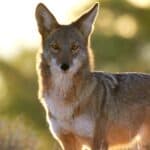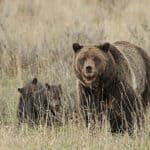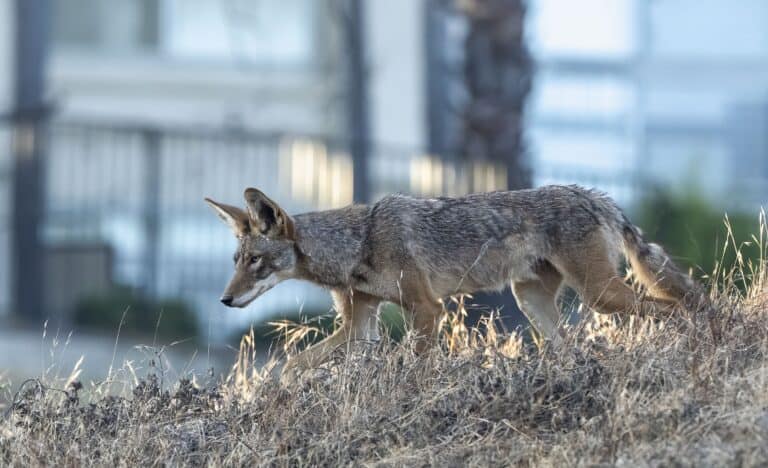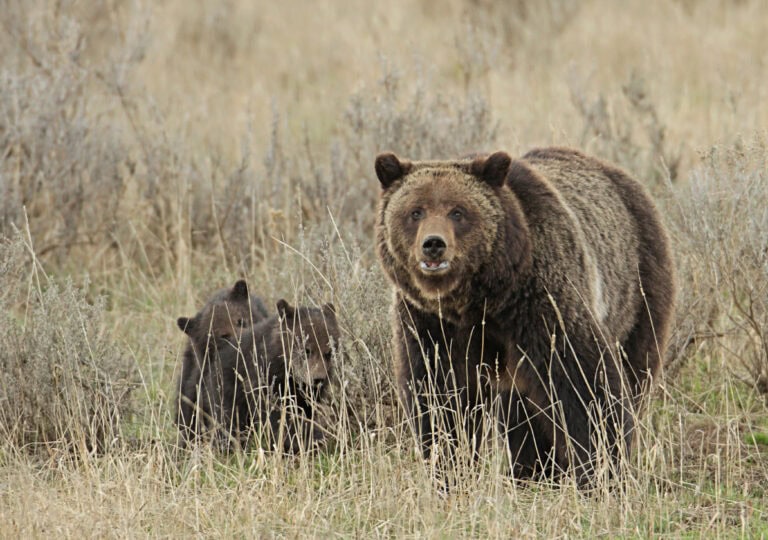Sign up to comment in support of wildlife before August 25th
During the Wisconsin Conservation Congress’ (WCC) 2022 Spring Hearing, wildlife advocates were able to pass multiple county-level citizen resolutions favorable to Wisconsin’s wildlife, such as proposals to ban coyote and wildlife killing contests, trapping, captive hounding and night-time hunting. But that was only the beginning of the resolution approval process. To get those resolutions through the WCC process and into policy, Wisconsin wildlife still needs your support.
At their next meeting, the WCC’s ‘Fur Harvest’ Advisory Committee will be deciding on whether to accept or reject each resolution to continue the WCC approval process. This year, the committee has allowed virtual meeting attendance and public comments, which provides wildlife advocates with a great opportunity to promote broader values of care towards and coexistence with wildlife.
Let the ‘Fur Harvest’ Committee know you support resolutions to restrict the killing and harming of wildlife!
Here’s how you can help:
- Contact Committee Chair Ed Harvey, Jr. at 920-528-7071 prior to August 25th, 2022 and ask to provide public comments at the meeting.
- Attend the Fur Harvest Committee meeting on Saturday, August 27th at 9am (CT) to provide oral testimony. [Agenda with meeting link]
- Prepare your oral testimony ahead of time by familiarizing yourself with the resolution(s) you would like to speak in favor of (resolutions are included within the committee agenda). Many resolutions contain talking points you can personalize. Keep your comments respectful, polite and brief (generally about 2 minutes; the committee chair may indicate more specific instructions during the meeting).
- Spread the word by sharing this alert with other Wisconsin residents and encourage them to take action.
* * * * *
Talking Points ~ please remember to personalize and be respectful
- Wildlife Killing Contests
- There is no scientific evidence that indiscriminately killing coyotes and other wildlife reduces their populations, increases populations of game animals like deer or protects livestock. Randomly killing coyotes disrupts their pack structure, which can increase their populations and increase conflicts between coyotes, humans, and domestic animals. Preventing conflicts by utilizing humane, non-lethal solutions is more effective.
- Wildlife targeted by contests play an important ecological role in healthy ecosystems. For example, coyotes reduce rabbit and rodent populations, scavenge animal carcasses and increase biodiversity. These contests are counterproductive to sound management.
- Eight states have prohibited wildlife killing contests. As awareness of these barbaric events spreads, Americans are increasingly demanding an end to this bloodsport.
- Killing contests damage the reputation of responsible hunters by violating fundamental hunting ethics. Countless animals are injured or orphaned during killing contests. The events also put non-target species at risk.
- Killing contests are a bloodsport. Killing coyotes for thrills and prizes—with no respect for their intrinsic or ecological value—is senseless violence and waste.
- This bill is not a ban on hunting and does not impact other laws. Individuals will still be allowed to hunt coyotes and other wildlife according to state laws.
- Wisconsin’s wildlife is managed in trust for all Wisconsinites. Allowing individuals to wantonly kill wildlife as part of a cruel bloodsport is a grave violation of the state’s obligations to hold wildlife as a public trust for all citizens.
Trapping
- No method of killing an animal by trapping for recreation, commerce, or nuisance/damage control can avoid inflicting some level of pain and suffering, even if brief, before death.
- No method of killing an animal by trapping for recreation, commerce, or nuisance/damage control can avoid the potential of capturing, with the risk of injuring or killing, non-target animals.
- No method of killing animals by trapping for recreation, commerce, or nuisance/damage control can be supported by credible scientific data or evidence as serving a legitimate wildlife management or conservation objective that cannot be accomplished with more humane alternatives.
- There is no credible evidence that trapping effectively manages populations of predators or their prey species. Most traps—and specifically their settings, lures or attractants—attract multiple non-target species, and therefore unsupervised trapping that is characteristic of recreational, commercial, and control trapping has the potential to indiscriminately catch, maim, and kill non-target animals including domestic dogs, imperiled species, and animals of the unintended sex, age class, or species.
- Our responsibility to mitigate the prolonged pain and suffering of target animals and decrease the risk of anthropogenic deaths to non-target animals (i.e., the claims of these nonhuman animals to life and well-being) trumps human claims to trapping for recreation, commerce, and nuisance/damage control.
- Trapped animals can experience extreme stress, dehydration, hunger, panic-induced self-mutilation, exposure to weather, permanent physical damage (particularly injured/ loss of limbs), and predation—all of which constitute more than fleeting pain and suffering before death.
- More than 80 countries and seven states, including Massachusetts, New Jersey, and Rhode Island, have banned leghold traps because of their inherent cruelty and indiscriminate danger to non-target animals.
Hounding
- Hunting with hounds is not wildlife management; it violates fair chase principles and is increasingly opposed by hunters and the public alike. Wisconsin’s coyotes are a vital part of the ecosystem and do not need lethal management.
- Many people and most hunters do not support this cruel form of hunting. Hounding is legalized dogfighting. Hunting with hounds stresses coyotes, even if they are not killed at the end of the chase. During the training season, nursing mothers waste vital calories fleeing from hounds. Pups are also in direct danger if they can’t flee from the hounds fast enough or if one or both of their parents are killed by hounds, leaving them orphaned.
- Hounding is cruel to dogs, coyotes, and non-target wildlife. Hounds can become injured and stressed, especially during hot weather. Hunters often have no control over their hounds, who are miles away and can be hit by cars or trespass on private property while in pursuit of wildlife. Because hounds track prey for long distances, they invariably pursue and stress non-target animals including deer, moose, small mammals, and ground-nesting birds.
- Coyotes are an integral part of ecosystems. They provide ecosystem services such as pest and disease control by eating rabbits and rodents like white-footed mice, which can carry ticks that cause Lyme disease. Coyotes also help suppress populations of raccoons, skunks, and other small carnivores, which leads to healthier and more diverse populations of birds.
- Hounding often violates property rights, as hounds are left to run unchecked through private property, with reports of serious incidents and concerns over the practice, especially in Northern Wisconsin.
Thank you for helping protect Wisconsin’s wildlife!
Please share this action alert with other Wisconsin residents!






